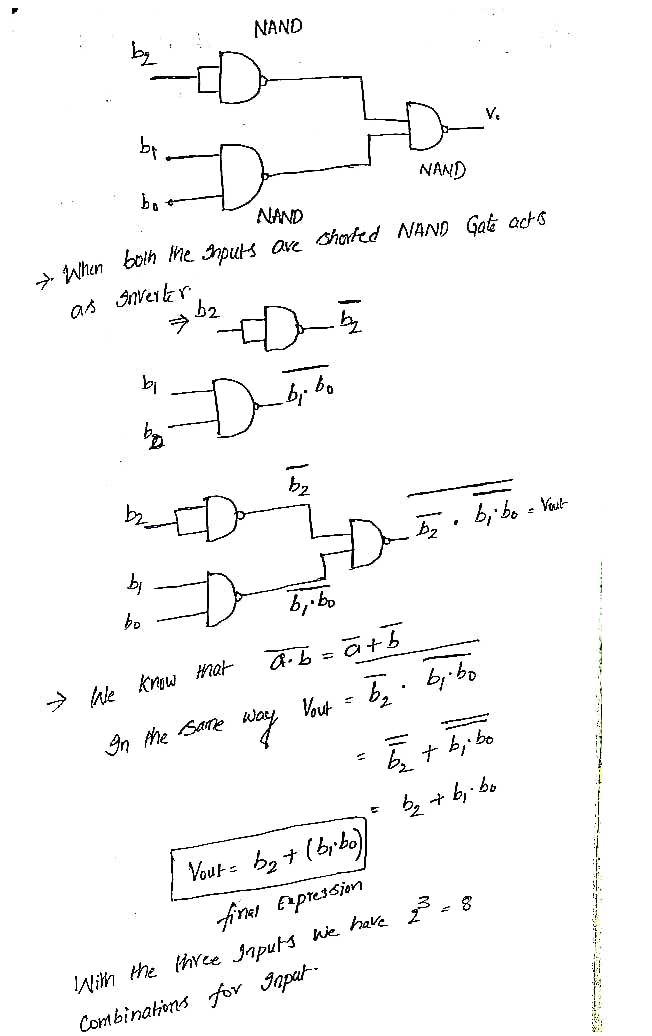Task 1: 1-bit Full Adder For this task, you will be building a 1-bit Full Adder circuit. To begin, consider how you do binary addition on paper, but only look at what happens in a single bit. Ultimately, for each bit, you have 3 inputs, and 2 outputs. The inputs are A and B, the two bits you are adding, along with a potential Carry In (Cin, some sort of carry from the previous bit). The outputs are the sum and a Carry Out (Cout) that goes onto the next bit. Consider all of the possible permutations of A, B, and Cin being 0 and 1, and fill out what Sum and Cout would be in the table below
Task 1: 1-bit Full Adder
For this task, you will be building a 1-bit Full Adder circuit.
- To begin, consider how you do binary addition on paper, but only look at what happens in a single bit. Ultimately, for each bit, you have 3 inputs, and 2 outputs. The inputs are A and B, the two bits you are adding, along with a potential Carry In (Cin, some sort of carry from the previous bit). The outputs are the sum and a Carry Out (Cout) that goes onto the next bit.
- Consider all of the possible permutations of A, B, and Cin being 0 and 1, and fill out what Sum and Cout would be in the table below
|
A |
B |
Cin |
Sum |
Cout |
|
0 |
0 |
0 |
||
|
0 |
0 |
1 |
||
|
0 |
1 |
0 |
||
|
0 |
1 |
1 |
||
|
1 |
0 |
0 |
||
|
1 |
0 |
1 |
||
|
1 |
1 |
0 |
||
|
1 |
1 |
1 |
- Now that you have a table for the 1-bit Full Adder, you should be able to directly come up with the sum of product (SOP) equation for Sum and Cout (separately, in terms of A, B, and Cin).
- Use a K-map to minimize Cout (Sum would be requested too, but it doesn’t simplify, so just Cout).
- In digital,start with 3 input components, “A”, “B”, and “Cin”, and 2 output components, “Sum” and “Cout”.
- Implement a Full adder using any method you would like, but you cannot use the Adder component under components ----> arithmetic.(1)Think a little about which method you want to use. You can either use the SOP from the truth table to make the schematic, or use the XOR you made in the previous lab.
(2) Note: If you make the schematic from SOP, because this table has 2 outputs, you essentially need to make two circuits in one. For doing Sum, ignore Cout and implement Sum in terms of A, B, and Cin. For doing Cout, ignore Sum and implement Cout in terms of A, B, and Cin (but remember to use a K-map to simplify Cout and make the schematic from the simplified form).
(3) To test your adder, you can also go to components ---> misc ---> test case. Put the test case in your file. Right click it, go to edit, and put in what the inputs and outputs would be. So, for example, this is how you could test the schematic for an AND gate:
Once you put in the inputs and outputs, go to simulation → run tests, and make sure everything passes. To test your adder, do this process for the adder truth table.
If everything passes, your output will be shown in green like this:
This is the test result for the AND schematic.

Trending now
This is a popular solution!
Step by step
Solved in 2 steps with 2 images









